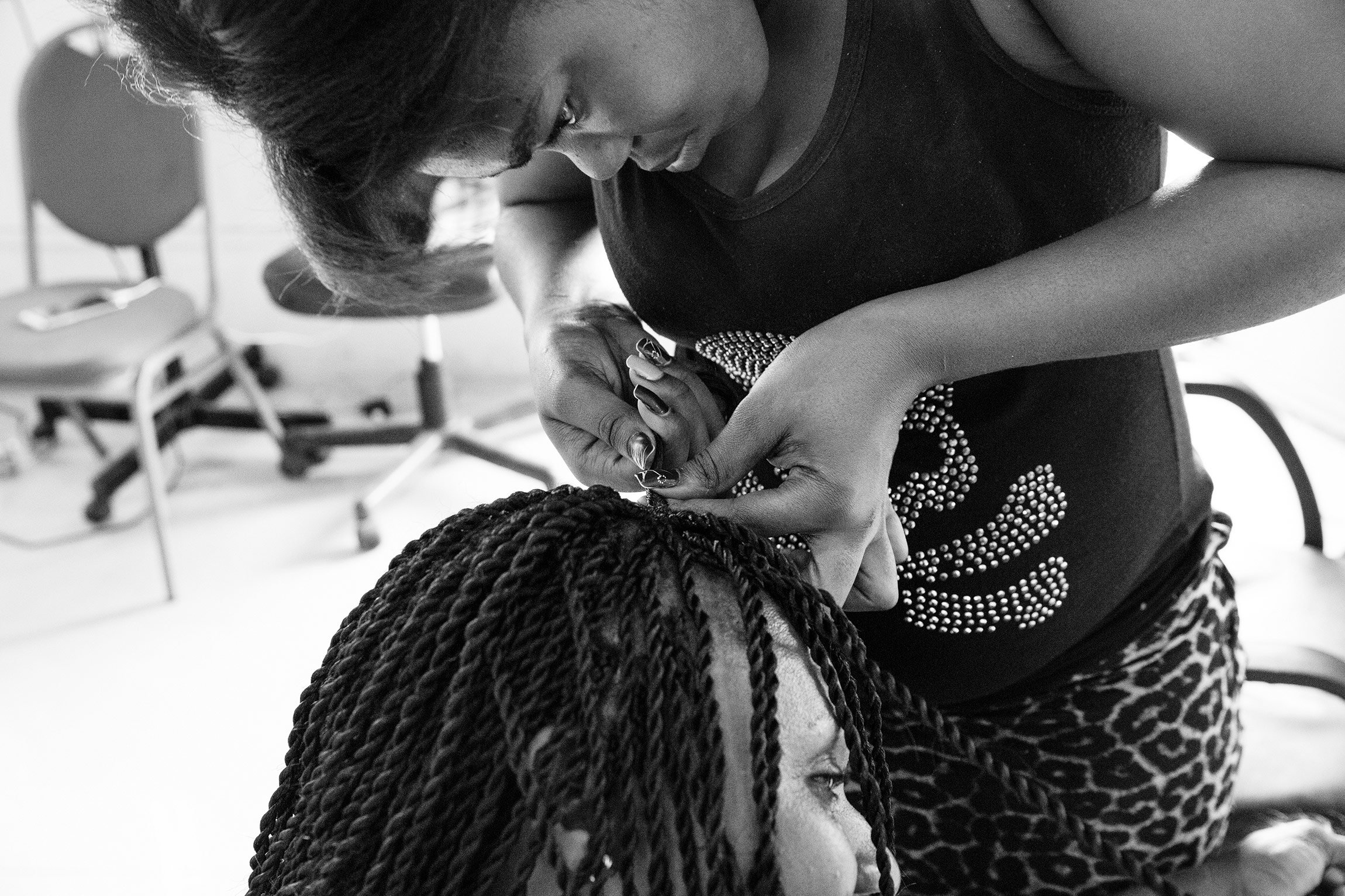


HAIR
Every Monday, a New Look. In this series of images, I aimed to highlight the significance of hair and the artistry of its various styles in African culture. Unfortunately, the story has never been published, but perhaps one day I’ll have the opportunity to add more photos and delve deeper into the subject.
Changing hairstyle is a common weekend activity in Luanda, and I imagine it’s similar beyond Angola’s borders too. My female production team members often surprised me at the beginning of the week with new hairstyles – braids, twists, knots, long or short. It was always delightful to see their transformations. For generations, there have been hairstyles unique to Black people, historically linked to heritage, symbolizing status, values and beliefs. However, since Black hairstyles were once banned in the military, workplaces and schools outside Africa, many turned to chemical relaxers and other harmful methods to conform to Caucasian hair standards. These styles became beauty norms abroad and even within Africa.
Since the 1960s, waves of Black empowerment and rejection of European beauty standards have been encouraging a return to natural curls. This resurgence was the initial inspiration for my story. During the many hours spent driving around Luanda, observing city life, I noticed that numerous ‘Salao de Beleza’ (beauty salons) also advertised ‘cabelo natural’ (natural hair). My female team members confirmed a growing trend towards embracing natural hair. When I began visiting beauty salons to take photographs, I understood the appeal of spending a Saturday afternoon at the hairdresser. The atmosphere was as relaxed as one’s own living room, with a sense of community among the girls and women. There was laughter and chatter as each strand of hair was skillfully and proudly transformed into a new masterpiece.
And let’s not forget the many mothers who style their daughters’ hair at home, carrying on the knowledge and tradition of this craft that has been passed down for decades.


